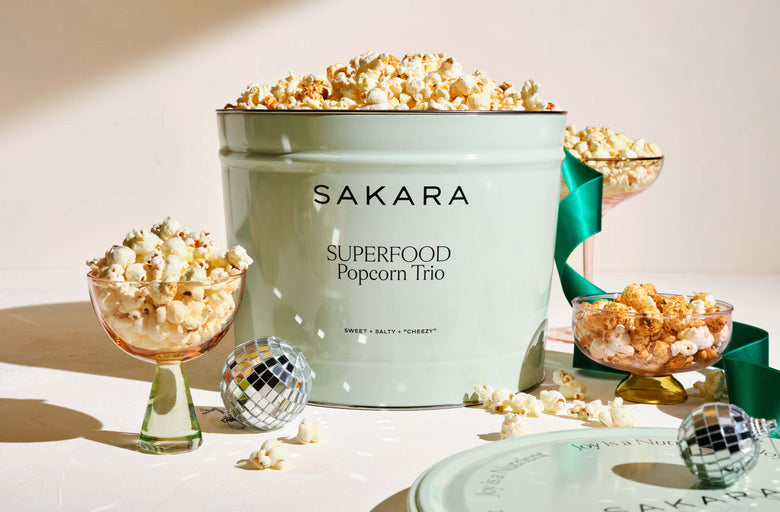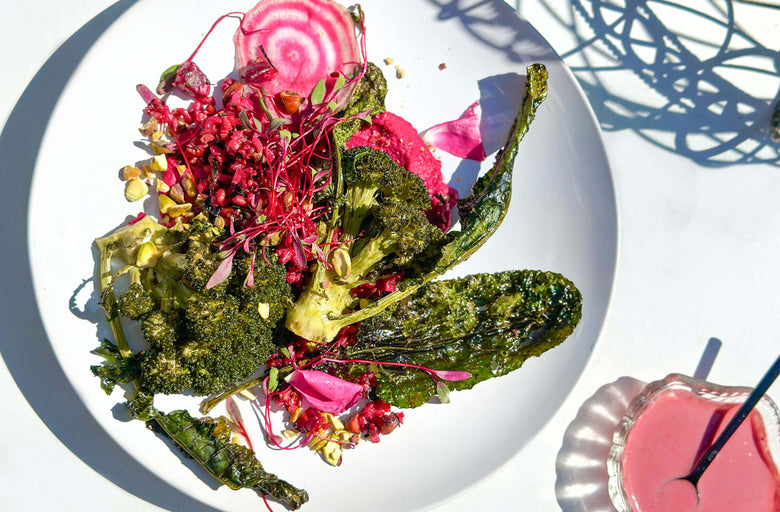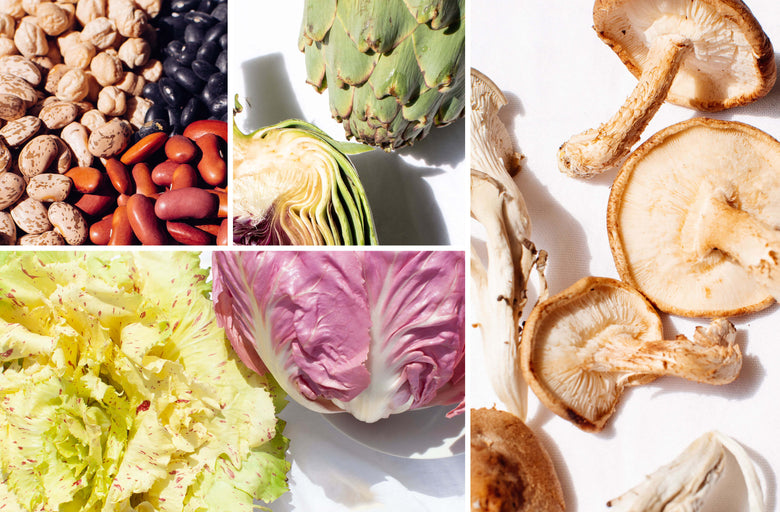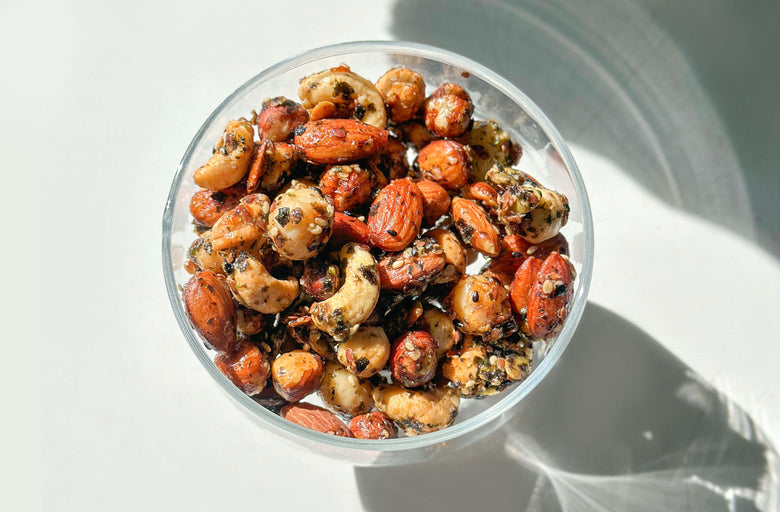Heeding nature’s call is more vitally important than ever: a recent study found that spending two hours a week in nature has a positive impact on both our physical and mental health. But our collective negligence of the great outdoors isn’t just impacting our stress levels, it also means that we’ve actually become disconnected with the earth and what it’s able to provide. In centuries past, when people’s relationship with nature was more of a symbiotic one, they had a greater understanding and appreciation for the bounty of remedies available in the herbs and plants that populate it.
To gain a better understanding of these potent natural wonders, we turned to two experts whose cups runneth over with herbal knowledge: Sandra Chiu, founder, acupuncturist and herbalist at Brooklyn’s beloved Lanshin clinic; and Jill Blakeway, founder of Yinova, and a doctor of acupuncture and Chinese medicine, licensed acupuncturist, and clinical herbalist. Ready to glow?
SCHISANDRA
It’s a fruit that functions as an adaptogen. “That means it helps the body to modulate itself in the face of a variety of stressors,” Blakeway says. “It also increases our resistance to disease, is anti-inflammatory, and slows the effects of aging and prevents wrinkles and skin redness.”
WILD CHERRY
In TCM (Traditional Chinese Medicine) cherry correlates to the blood and, specifically, strengthening it. “In TCM’s view having good quality blood directly contributes to good quality of skin, tissue, and hair,” says Chiu.
PEONY ROOT
Though Chiu is quick to remind us that in TCM herbs are most often used together in a formula, instead of singularly, peony root is one of her all-time favorites. “It improves blood quality, and, for that reason, is often used to help regulate the menstrual cycle,” says Chiu. “It also helps to regulate the liver organ system, which can benefit mood, alleviate the negative impacts of stress on the system. and even alleviate pain. In TCM, anything that improves blood quality can be directly related to improving one's beauty quotient, aka improving the appearance of skin, hair, and nails.”
SAW PALMETTO
The berries of this palm plant are most commonly used to support prostate function in men and treat some forms of baldness. “That’s because of its effect on testosterone,” says Blakeway, “specifically it seems to prevent testosterone from being converted into its more potent form dihydrotestosterone (DHT).” Because of its antioxidant content, it is also believed to be effective at decreasing inflammation.
GYNOSTEMMA
Though it’s from a different family of plants (a leaf from a vine in the cucumber family), this adaptogen is often swapped in for ginseng. “In Asia, it’s made into a tea which people drink to improve endurance and boost the immune system,” explains Blakeway. “Its high saponin content and its effect on liver function mean that it speeds up the removal of debris making it a useful herb for dull, lifeless skin,” Chiu adds that in TCM it’s also used topically to help reduce hyperpigmentation.
ORANGE BLOSSOM
You may be most familiar with orange blossom as a note in your favorite summer perfume, but, says Blakeway, when prepared as a tea it’s also prized as a treatment for anxiety, insomnia, and to promote a healthy digestive system. “Many skin problems, including some types of acne, are related to poor digestive function so because of this is can also clear skin irritations,” she adds.
GOTU KOLA
Also known as Indian Pennywort, this wonder herb is anti-inflammatory, antimicrobial, and circulation-boosting. “It treats inflammation anywhere in the body, including the skin where it helps offset the effects of aging,” says Blakeway. Chiu relies on it most often in her practice as a means of clearing the toxicity associated with acne. “Used internally it helps not only clear the toxin load, but also reduces swelling and improves blood circulation, all actions that are very helpful in clearing inflammation from the skin, especially in acne.”
ELEUTHERO
A hardy shrub it’s more commonly known as Siberian Ginseng. “Like ginseng, it increases energy and treats fatigue,” says Blakeway. “Its effect on circulation makes it a good choice to help with muscle recovery after exercise and it also improves lymphatic drainage so it treats any swelling.”
REISHI
Quickly becoming a more common part of our wellness ingredient vernacular, these potent mushrooms are immune boosters and fatigue fighters. “Their high antioxidant content protects the body against cellular damage,” says Blakeway. In TCM, Chiu elaborates, it tends to be employed for more significant collapses of qi (the energy of the body) that come with severe health conditions like cancer.
CHAGA MUSHROOM
Often made into a tea, the mushroom’s antioxidants act as an immune booster. “It’s also anti-inflammatory and can be used to clarify the skin as well as treat inflammation deeper in the body,” says Blakeway. Chiu clarifies that while it’s become an oft-referenced superfood, the herb is actually used infrequently in TCM.
BILBERRY
Because it was proven to reduce visual fatigue the plant was used by British pilots during WWII to improve their night vision. “It’s high in tannins which reduce inflammation and flavonoids which increase circulation,” says Blakeway. And more recent research has revealed that the berries also strengthen capillaries.
CATUABA BARK
Blakeway explains that this bark native to the Amazonian forest is most commonly known as an herb for enhancing male sexual performance, but it can also help contend with fatigue, anxiety, and poor memory.
HIBISCUS
While the plant is not commonly used in TCM, its inflammation-reducing properties are still understood by practitioners. “We say it clears damp-heat, which is when excess fluids and heat combine to form a ‘wet inflammation,’” says Chiu. “Because of that it can be useful in helping to resolve skin conditions like acne and psoriasis, but it would be used in combination with other herbs that assist clearing those conditions, not so much as a singular herb.” The plant’s distinct red flowers, when brewed into a strong tea, have also historically been thought to have lust-stoking powers.
ASTRAGALUS
One of TCM’s most popular and versatile herbs, the root is particularly effective at fortifying the qi, especially the immune system. “It can also help generate fluids while simultaneously helping the body get rid of excess swelling when fluids aren't where they are supposed to be,” says Chiu. “Though not as common, sometimes I will use this herb to help expel toxins when they need and extra push out of the body, like with folliculitis. But, I would never recommend anyone take this herb on their own because depending on their individual case it could help or make it worse. But if used correctly in the correct context, it can be helpful.”
Want to learn more about harnessing nature's ingredients for your body, mind, and spirit? Explore these hand-picked features:
An Insider's Guide To Collagen
Beauty's Best Foods
The Sakara Guide to Plant Protein






